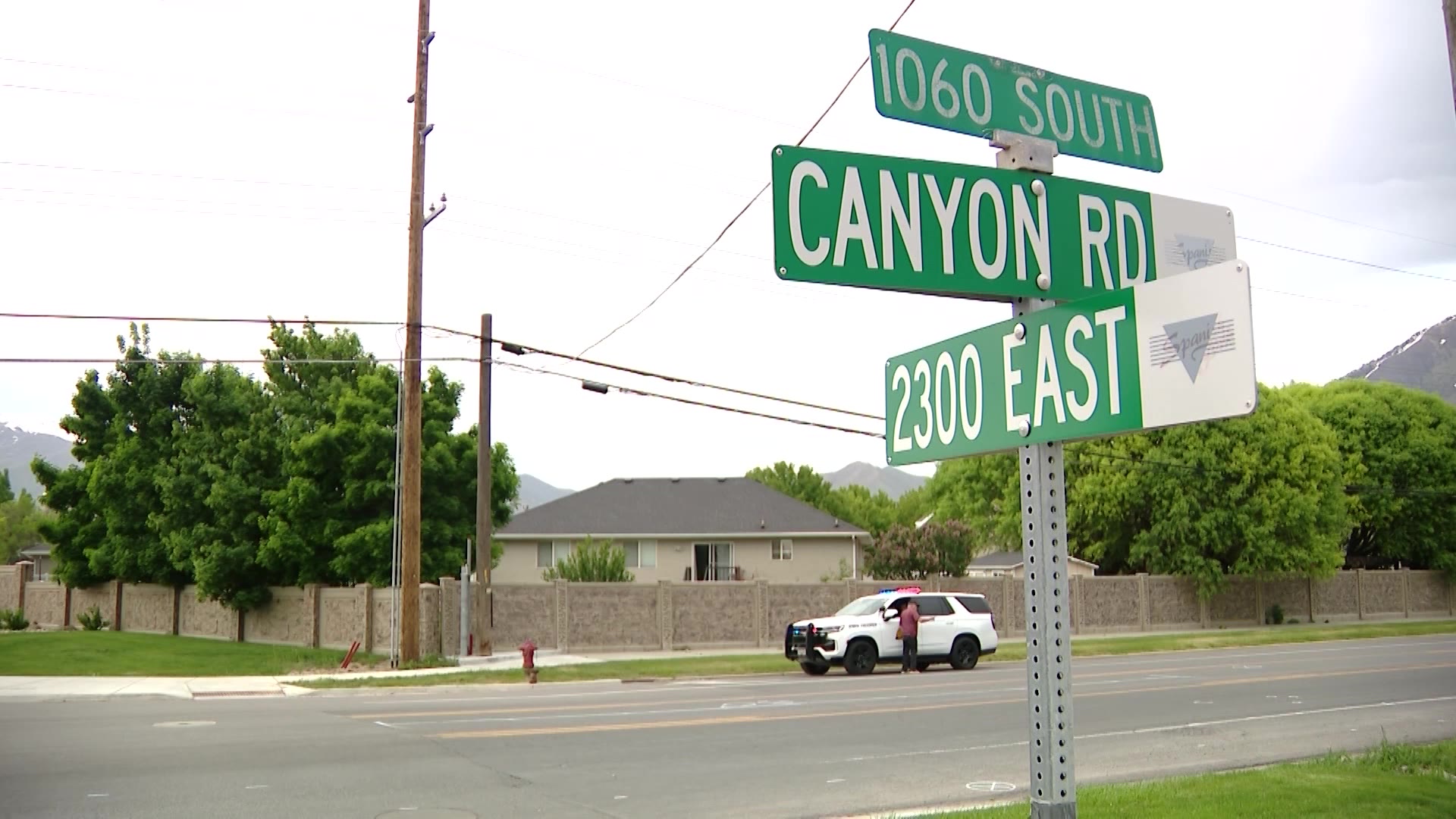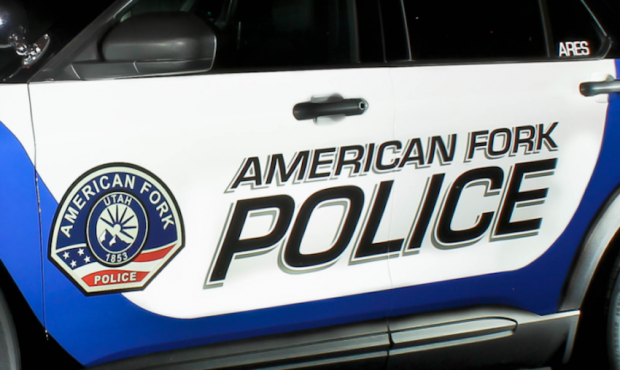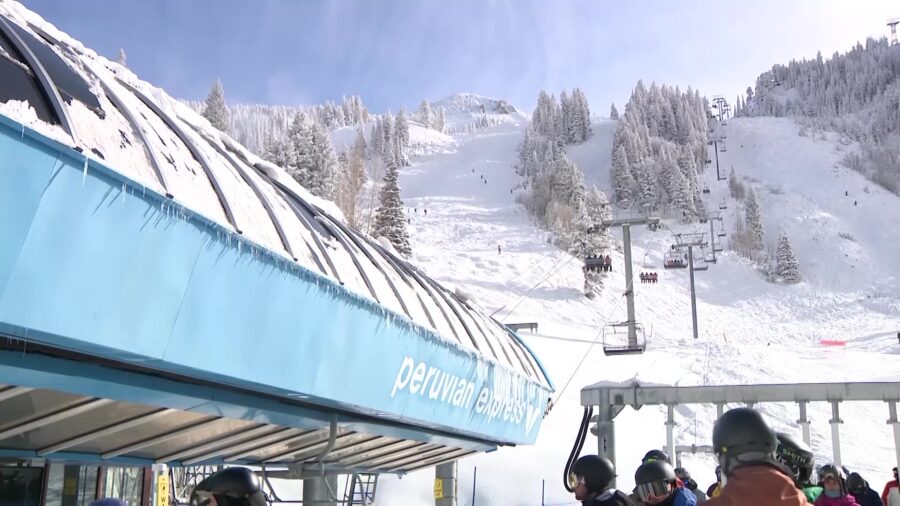Moab Madness: Inside one of Utah’s busiest search and rescue teams
Jul 18, 2023, 12:00 PM | Updated: 12:05 pm
MOAB, Utah — Across the law enforcement radio airwaves, a loud tone rings out, followed by a page from a dispatcher: “We need search and rescue to respond to the Whitewash Sand Dunes…this is for a medical rescue UTV rollover…again, I need search and rescue to assist in a rescue…”
Soon after the callout, members from Grand County Sheriff’s Office Search and Rescue filed into a large garage-style building filled with all their gear and equipment.
People gathered in a large office at one end of the building, to begin strategizing as they looked at maps. A team loaded up a trailer with a UTV and immediately left.
“I’ve got four members headed that way,” said GCSO Sgt. Brad Hines over the radio.
This was the second time everyone gathered, the first being earlier in the day for a rafter who needed help. During the earlier call, Hines looked down at a map of where the rafter might be at, which could only be reached by an hours-long boat ride.
“We’re thinking he’s right about here,” he said.
Husband-and-wife team John Marshall and Melissa Nerone also looked down at the map. The two gave up their weekend, ready to help people in need.
“We’ll sometimes have two, three, or even four calls happening simultaneously,” Marshall said.
Whether it’s a UTV rollover two hours away deep down a trail, or a rafter deep down the Green River who can’t keep going, SAR team members will drop everything at a moment’s notice and respond to any remote location.

Sgt. Brad Hines (left), John Marshall (center left) and Melissa Nerone (center right) map out a search and rescue call. (KSL TV)
With 30 to 40 people on the Grand County SAR team, Marshall explained that members have training in many different areas: hopping on snowmobiles, loading into river boats, driving off-road vehicles in rugged terrain, dangling from ropes off a cliffside or jumping from a helicopter.
“Avalanches, hunting accidents, rockslides,” he said, listing off some of their SAR calls. “We have the Colorado River with whitewater rafting, kayaking, canoeing, swimming accidents, people that get swept out of a boat and washed down river. … We have climbing accidents, we have base jumpers, we have the national parks that we throw a lot of support to.”
Covering 3,600 square miles in the county, Grand County SAR responded to 134 calls last year, rescued 120 people, logging more 3,066 hours.
That makes them the second busiest team in Utah in 2022 behind Wasatch County, by only one call.
Those stats don’t include all the training hours that Hines said team members go through, from making sure they know how to navigate the territory to building up the skills they need to make safe, successful rescues.
He said last year alone, team members drove 12,000 miles to and from rescues. And that’s just for the calls they could drive to.
“Some are only accessible by helicopter or on foot. Some are only accessible by boat,” Sgt. Hines said. “And so, we get people all over in the county and we have to use all of our resources to get them out of where they’re at.”
Decisions that save lives
Up in the Sand Flats Recreation area outside Moab, Marshall, Nerone, Hines and others unloaded a couple of UTVs from the SAR trailer.
They loaded up and headed to one of the spots where they get a ton of calls, near Slickrock mountain bike trail and Hell’s Revenge 4×4 trail.
Hines drove one of the UTVs out on the trail, with Marshall sitting in the backseat. Marshall knows the trails by heart.
“There’s going to be a fork ahead, I don’t know if you’ve gone that way,” he tells Hines.
Marshall explained that before making a rescue, they need to plan out the exact route and choose what makes the most sense with the best possible outcome — not necessarily the fastest. That’s why it’s important that at least some team members know the trails without looking at a map.
“We have people that are really strong rock climbers. We have people that know the river like the back of their hands,” Marshall said. “We have others that know every bike trail in Moab, others that know every off-road trail.”
Marshall does this for the love of the outdoors and helping people.
“You know that the efforts and the decisions that you made, saved that life on that person,” he said.
Others, like Carly Webster, have a unique story of how they joined the team.
In the Slickrock parking lot, Webster talked with Hines and others as they stood around the UTVs. She’s on the technical rope rescue team. Her expertise is in cliffside and canyon rescues, but Webster is also helping develop a mental health group within the team.
Webster’s own personal experience guided her toward Grand County SAR.
“I had an accident of my own and was rescued by the SAR team, and local EMS crews came in and helped get me out of the backcountry,” Webster explained. “Then I actually had to fly with our Classic Air medical over to Grand Junction, to the hospital there to be put in their ICU because the injury was so critical.”
Webster said she had been climbing up a fin and slipped on a bad patch of ice, fracturing her skull, and giving her a concussion and traumatic brain injury.
“After that, I really felt a lot more drawn to finding out what the team was about and being part of an organization that has a positive impact on locals and visitors here,” she said.
Now on the team for five years, Webster gives back by helping others in their worst moments.
“To be able to be there with those people and be a positive impact and be able to help them through a situation is something that helps me to feel fulfilled,” she said.
‘We’re going to be ready for it’
Along with that passion, comes a dedication to respond anytime, day or night, including holidays and weekends.
On the weekend KSL TV’s crew rode along, the couple of calls for help that came in didn’t require any full-on rescues by the team. Still, the weekend required hours of volunteer work.
Nerone, an on-call incident commander, explained that they figured out the rafter on the Green River wasn’t actually stuck in Grand County.
But that was after the team came together and spent time investigating the call.
“This one is clearly quite a few miles into Carbon (County). So that’s out of our jurisdiction,” she explained.
The SAR crew that responded to the ATV rollover that evening drove out to Whitewash Sand Dunes, more than an hour away, to find out the people who called made it off the trail on their own and planned to meet up with the ambulance.
The patient appeared to be suffering tremendous back pain and possible seizures.
Nerone and Sgt. Hines stayed at Incident Command, keeping in close radio communication with their ground team, the ambulance, and the medical helicopter.
They tracked the team, the injured party and a helicopter on a map on the computer screen.
Marshall was one of the team members out at Whitewash Sand Dunes.
“Looks like they are just off the main road, they’ll be standing there waiting,” he said, over the radio to his wife.
With Nerone directing the on-the-ground crew, everyone stayed until the person was airlifted to the hospital. Nerone waited for updates from Marshall. She and Hines could see the helicopter make its way toward the area on the map, then land.
“Copy that, helicopter on the ground,” she said to Marshall over the radio.
Marshall soon radioed back: “The helicopter has lifted, and we’re heading back shortly.”
With a long drive back ahead, the team worked late into the night. They know they’ll do it all again when the next call comes in.
“We don’t know what we’re going to be doing next, but it’s going to be something,” Marshall said, adding, “and we’re going to be ready for it.”



















